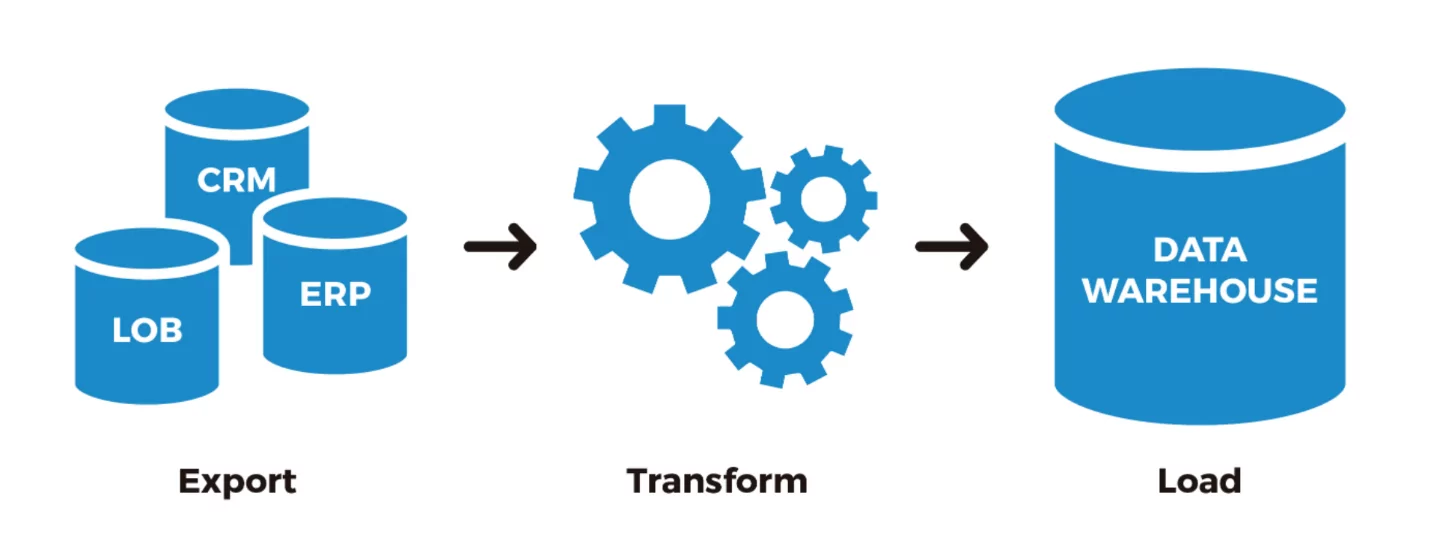1. What is ETL and ETL Testing?
Extract, Transform, and Load (ETL) is a data engineering process that includes retrieving data from multiple sources, converting it into a helpful resource, and then transferring it into the systems where users can solve business problems. ETL testing refers to the process of validating, verifying, and qualifying data while preventing duplicate records and data loss.

ETL processes facilitate the migration of data from its source to store for later use in reports. ETL testing is used to verify that no data is lost or distorted in the process. There’s a decent possibility that data might get lost.
- Data is frequently collected in a variety of formats from a variety of sources. Furthermore, the data warehouse could be of a different type.
- The volume of this data is enormous, and the number of sources is likely to increase.
- Duplicates and data quality issues are common in mapping processes.
Importance of ETL Testing:
ETL testing is known as the process of validating, authenticating, and verifying data while avoiding duplicate records and data loss. ETL testing ensures that the data is accurate and consistent throughout the migration process and in the data warehouse. Some common errors that can be discovered during ETL testing include invalid values in source databases which cause data to be missing at the destination, nonstandard formats in source and target database formats, in contrast, valid values are rejected due to input/output issues, and system performance issues occur when multiple users or large data volumes are not supported.
ETL testing is required in the following scenarios:
- After data has been imported into a data warehouse for the first time,
- After you’ve added a new data source to your data warehouse,
- After a data integration project is completed,
- After a data migration job is completed,
- When you need to move data for whatever reason,
- If any of the source systems or the target system are suspected of having data quality concerns,
- If there are concerns about the ETL operations’ performance.
Stages for ETL Testing:
The following are steps for effective ETL testing:
1. Business Requirements:
Design the data model, create the business flow, and evaluate reporting requirements depending on client requirements. It’s critical to start here so that the project’s scope is well-defined, documented, and thoroughly understood.
2. Validate your data sources:
Count the records in the primary source table to ensure that all the data is transferred.
3. Design Test Cases:
Consider checking the data for completeness and quality on the target system. ETL process performance testing is also an excellent idea.
4. Extract data from source systems:
Confirm that all the data was properly and completely extracted from the source systems.
5. Transformation Logic:
Verify that the data has been translated into the correct format for the destination system and follows business standards.
6. Load the data in the target warehouse:
Verify that all the data has been migrated by counting the records. Check for data integrity by seeing if any records were rejected and not loaded by the target system.
7. Summary Report:
Keep track of any defects or issues you find during the testing process. Adjust your processes as needed to solve the issues.
8. Closing Report:
Complete testing and proceed with the ETL test.
Learn More About QA Services
Types of ETL Testing:
ETL testing aims to make sure that data is transferred to the destination without errors. Different tests are executed and are categorized as the following:
Production Validation Testing:
The data utilized in production should be error-free to produce accurate reports for analysis. This test ensures that the data sent to the production system is correct. It includes Validating the data in the production system and comparing it to the source data.
Source-to-target Data Testing:
This test compares data values from the source and target systems. Data testing from source to target is a time-consuming process critical in financial and banking applications.
Source-to-target Count Testing:
This test aims to see if the data count in the source system matches the data loaded in the target system. Although the test estimates the expected outcome, it is not always precise or reliable. It is not concerned with minute details such as the value, order, or kind of data loaded.
Metadata Testing:
This test aims to verify data types, length, indexes, and constraints.
Performance Testing:
The test verifies that the data is loaded within the specified time range. It also determines whether the system can handle current user traffic and whether it can handle the predicted increase in the number of users accessing this data.
Data Transformation Testing:
The test determines if business requirements transform data. The tester runs numerous SQL queries for each row and compares the results to the target data.
Data Integration Testing:
A tester confirms that data from all sources is moved as expected and checks threshold values in this form of testing.
Report Testing:
The accuracy of data in reports is evaluated in this test. Testers perform a few computations and check the layout and functionality of the application against the data model.
Conclusion:
In conclusion, this article gave a comprehensive overview of ETL testing. It explained the testing procedure, including its stages, types, and benefits. ETL testing primarily compares how data in the target database performs, looks, and functions to data in the source database. Thus, it is essential to comprehend the source data when testing the ETL process. Testing is critical in governing the ETL process, and every type of IT organization must incorporate ETL testing into its operations.


